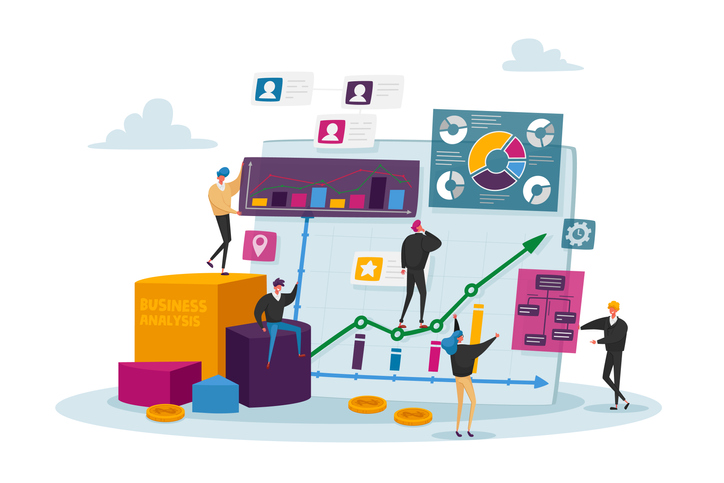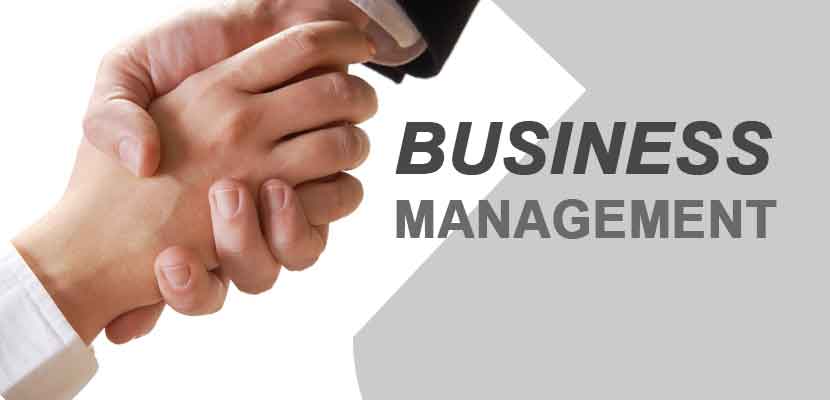SAFe Certification: Equipping Leaders in Scaled Agile Frameworks
The landscape of task administration is developing, and SAFe Certification stands as a pivotal component for leaders looking for to carry out the Scaled Agile Framework effectively. The trip to ending up being an accredited SAFe leader involves even more than just getting knowledge; it incorporates comprehending the nuanced roles and responsibilities within dexterous atmospheres.
Understanding SAFe Qualification
SAFe accreditation, which stands for Scaled Agile Structure accreditation, is a credentialing program designed to outfit experts with the knowledge and abilities required to implement active practices at range within their organizations. The SAFe structure supplies an organized strategy that assists organizations straighten their groups and handle larger jobs effectively, making certain that nimble techniques are applied continually across numerous levels.
The qualification encompasses numerous roles, consisting of SAFe Agilist, SAFe Practitioner, and SAFe Program Expert, each focusing on different facets of the framework. The program highlights the relevance of lean principles, continual delivery, and partnership amongst teams, promoting a setting conducive to advancement and efficiency.
Participants go through strenuous training that combines academic understanding with practical application, improving their capability to lead active improvements. The educational program consists of topics such as active groups, program execution, and portfolio administration, making certain that certified experts are fluent in all facets of the SAFe methodology.
Benefits of SAFe Certification
Acquiring a SAFe qualification provides countless advantages for specialists looking to improve their careers in active task monitoring. It equips individuals with a comprehensive understanding of the Scaled Agile Structure, enabling them to successfully implement nimble principles across huge companies. This understanding is crucial as businesses increasingly adopt agile methodologies to improve productivity and flexibility.
In addition, SAFe qualification boosts a prospect's marketability and profession prospects. As organizations look for qualified experts to lead their nimble changes, certified people can regulate greater salaries and stand apart in an affordable job market. Getting this accreditation demonstrates a dedication to constant learning and specialist advancement, which is highly pertained to by employers.
Networking opportunities additionally occur from SAFe certification, attaching individuals with an area of like-minded specialists and market leaders. This can lead to cooperation, mentorship, and knowledge sharing, additional enriching one's professional experience.
Last but not least, licensed experts are typically better equipped to cultivate a culture of collaboration and innovation within their groups, driving successful results in agile jobs. Generally, the benefits of SAFe certification are manifold, making it a useful investment for those in the nimble task management domain.
The Qualification Process
The journey to accomplishing SAFe qualification involves an organized procedure designed to guarantee prospects are well-prepared for dexterous leadership roles. This procedure typically begins with selecting the suitable SAFe accreditation that lines up with one's job aspirations and organizational needs, such as SAFe Agilist, SAFe Professional, or SAFe Program Professional.
Prospects are after that encouraged to take part in an extensive training course, normally carried out by a licensed SAFe instructor - SAFe Agilist. These courses cover vital ideas, concepts, and methods of the Scaled Agile Structure, supplying individuals with useful understandings and functional understanding
Complying with the training, candidates should pass an accreditation examination to demonstrate their understanding and proficiency in applying SAFe principles. The tests are made to analyze not just expertise however likewise the ability to implement agile practices properly within a scaled setting.
When accredited, individuals gain accessibility to a wide range of resources, including community networks and recurring discovering chances, which even more enhance their dexterous management abilities. Maintaining qualification requires continual expert development, ensuring that leaders remain present with developing methods within the structure. Eventually, the certification procedure is an extensive yet fulfilling pathway for those aiming to master agile leadership.
Duties and Responsibilities
Effective execution of the Scaled Agile Structure (SAFe) relies greatly on clearly specified functions and duties within a company. These roles are crucial for making sure alignment, performance, and effective cooperation across groups.
At the team degree, key duties include the Scrum Master, Item Proprietor, and Agile Team Members. The Scrum Master promotes the nimble procedure, guaranteeing that the team adheres to the SAFe concepts while eliminating impediments. The Item Owner is accountable for taking full advantage of the worth of the product and handling the backlog to align with service objectives. Agile Team Members add their specialized abilities to supply top quality increments.
At the program level, the Launch Train Engineer (RTE) plays an essential function in coordinating the Agile Launch Train (ART), ensuring smooth program execution and positioning across numerous teams. Furthermore, the system designer and entrepreneur provide technical support and critical vision, respectively.
Continual Renovation in SAFe
Continual improvement is a foundation of the Scaled Agile Framework (SAFe), driving companies to enhance their processes, items, and total efficiency. By fostering a society of continual enhancement, SAFe motivates teams to consistently analyze their process and end results, identify inefficiencies, and implement strategies for enhancement. This repetitive procedure not only increases efficiency but likewise straightens teams with the company's critical purposes.
Central to this technique are the Inspect and Adapt (I&A) workshops, which offer organized possibilities for reflection and knowing. During these sessions, teams analyze efficiency metrics, review challenges, and generate workable understandings to assist future iterations. Additionally, using Agile Launch Trains (ARTs) helps with cross-functional collaboration, allowing teams to share best techniques and drive collective enhancement.
In addition, Lean-Agile management plays a critical function in promoting a mindset of continual enhancement. Leaders are tasked with fostering an environment where trial and error is motivated, and failures are checked out as discovering opportunities. By installing constant enhancement into the business culture, SAFe empowers groups to remain receptive and active to changing market needs, eventually boosting their capability to provide value to consumers.

Verdict
In final thought, SAFe Accreditation works as a vital device for leaders aiming to implement active practices properly within their organizations. By cultivating a detailed understanding of the Scaled Agile Structure, this certification boosts advancement, collaboration, and task outcomes. Moreover, it opens avenues for professional development and networking amongst industry professionals, ensuring that qualified professionals continue to be adept in browsing the complexities of today's vibrant organization landscape. Ultimately, SAFe Accreditation contributes substantially to organizational success and strength.
The landscape of job monitoring is developing, and SAFe Certification stands as an essential component for leaders looking for to apply the Scaled Agile Framework effectively.Obtaining a Risk-free accreditation uses many benefits for experts looking to improve their professions in nimble job administration. The Scrum Master helps with the nimble process, guaranteeing that the team adheres to the SAFe concepts while getting rid of obstacles. By installing constant improvement into the organizational society, SAFe encourages groups to remain receptive and active to altering market demands, inevitably boosting their capability to provide value to consumers.
|
Master Agile Practices Through Comprehensive SAFe Qualification
In a significantly intricate service landscape, grasping Nimble practices via detailed SAFe accreditation has arised as an essential expertise for specialists aiming to enhance business performance. This certification not just supplies a deep understanding of the SAFe structure however likewise cultivates important skills for promoting collaboration and positioning among groups. As organizations look for to navigate the challenges of quick modification, the execution of Risk-free principles offers a pathway to boosted results. The journey to accreditation involves more than simply theoretical expertise; it requires a calculated method to application that can dramatically impact organization dexterity. SAFe Agilist. What does this require?
Recognizing SAFe Framework

At its core, the Secure structure consists of 4 degrees: Group, Program, Huge Remedy, and Profile. Each level addresses certain elements of Active shipment, from handling small groups of programmers to looking after numerous programs and straightening critical campaigns with service goals.
SAFe motivates partnership among cross-functional teams, cultivating a setting where continual enhancement and advancement are critical. By emphasizing alignment, openness, and integrated high quality, the framework equips companies to react quickly to market modifications my explanation while supplying worth to clients.
Furthermore, SAFe supports numerous techniques, such as Scrum and Kanban, enabling organizations to customize their strategy according to certain project demands. This flexibility makes SAFe a robust structure for organizations intending to prosper in a quickly evolving organization landscape.
Advantages of SAFe Certification
Regularly looked for after in the Agile community, SAFe accreditation supplies various advantages for specialists and organizations alike. One of the key benefits is the improvement of abilities and understanding in applying the Scaled Agile Structure (SAFe), which outfits individuals with the devices required to drive effective Agile changes. This qualification indicates a dedication to expert growth, making candidates extra competitive in the work market.
For organizations, having actually licensed experts cultivates a society of continuous enhancement and cooperation, vital for adapting to changing market needs. It makes it possible for teams to straighten their work with calculated objectives, ultimately enhancing performance and efficiency. Business with a greater proportion of SAFe-certified staff members often experience decreased time-to-market and enhanced top quality of deliverables.
Moreover, SAFe accreditation promotes networking opportunities with other Agile professionals, making it possible for the exchange of best methods and experiences (SAFe Agilist). This collective network can substantially add to organizational and personal growth. In recap, acquiring Secure qualification not only enhances individual abilities however likewise enhances the total Agile maturation of a company, bring about lasting success in today's vibrant organization atmosphere
Secret Elements of SAFe
Building on the advantages of SAFe accreditation, comprehending the crucial elements of the Scaled Agile Framework is important for efficiently executing its principles. The Risk-free framework comprises four primary degrees: Group, Program, Huge Remedy, and Profile. Each degree addresses various elements of nimble practices, helping with alignment and delivery throughout the organization.
At the Group degree, cross-functional groups function collaboratively utilizing Nimble approaches, such as Scrum or Kanban, to deliver incremental worth. The Program degree concentrates on the Agile Release Train (ART), which is a long-lived team of Agile groups that intends, dedicates, and performs together. The click here to read Huge Remedy degree addresses complicated solutions that call for numerous ARTs to operate in concert, ensuring control and combination.
Planning For SAFe Accreditation
Preparing for SAFe qualification needs a tactical approach to make certain a detailed understanding of the structure. Acquaint yourself with the core concepts and values of the Scaled Agile Structure (Risk-free) Testimonial resources provided on the Scaled Agile web site, including the Secure framework documents, situation studies, and whitepapers, to develop a solid structure.
Next, take into consideration registering in a main Secure training course. These programs, led by licensed SAFe Program Specialists (SPCs), deal structured discovering experiences that cover crucial ideas and sensible applications. Engaging with trainers and peers can enhance your grasp of the material.
Additionally, exercise with example test inquiries to familiarize yourself with the style and kinds of questions you might encounter. Signing up with research teams or online forums can promote knowledge exchange and offer assistance from fellow prospects.
Applying SAFe in Organizations
Executing the Scaled Agile Structure (Secure) within companies necessitates a structured technique that straightens groups and processes toward a typical goal. The effective application of SAFe starts with developing a clear understanding of its concepts, including openness, placement, and cooperation. Organizations must first analyze their present processes and identify areas for improvement, ensuring they are ready for the cultural shift that SAFe entails.
Next, management dedication is essential. Management has to proactively support the change by advertising a society of continual understanding and flexibility. Training and qualification for groups assist furnish members with the required skills and knowledge to operate effectively within the Secure structure. This consists of establishing Agile Release Trains (ARTs), which function as the foundation for supplying value across the organization.
Regular preparation sessions, such as Program Increment (PI) preparation, ought to be performed to focus on and synchronize teams job. Additionally, leveraging metrics to determine progression and performance is vital for recurring improvement. By constantly using SAFe principles and techniques, companies can achieve higher dexterity, boost collaboration, and eventually drive far better business outcomes. Accepting this structure placements organizations to respond quickly to market modifications and consumer demands.

Final Thought
In conclusion, understanding Active practices via extensive Secure accreditation considerably adds and improves specialist capabilities to business effectiveness. The understanding obtained from understanding the Risk-free structure, along with its key components, assists in successful improvements and improves collaboration amongst groups.
The SAFe (Scaled Agile Framework) structure offers as a structured technique for implementing Active techniques at scale across huge organizations. One of the main advantages is the enhancement of skills and expertise in implementing the Scaled Agile Structure (Secure), which gears up individuals with the devices necessary to drive successful Agile makeovers. In summary, obtaining SAFe accreditation not just improves specific capacities but likewise enhances the total Agile maturation of an organization, leading to sustainable success in today's dynamic service setting.
Building on the advantages of Risk-free accreditation, recognizing the key components of the Scaled Agile Framework is important for successfully applying its concepts.Applying the Scaled Agile Framework (SAFe) within organizations requires an organized technique that straightens groups and procedures towards an usual objective.
|
Breakthrough Your Career With SAFE Certification: Agile Expertise Unlocked
In today's rapidly developing service landscape, obtaining Risk-free accreditation can substantially boost your job trajectory by outfitting you with essential agile knowledge. This certification not only works as a testimony to your effectiveness in active methods yet likewise settings you as a driver for organizational change. As companies increasingly look for experts that can lead agile makeovers, comprehending the paths to acquire this certification becomes critical. Nonetheless, the genuine question exists in exactly how this credential can uniquely impact your occupation and open unanticipated doors in the agile domain name.
Understanding SAFe Qualification
SAFe Certification functions as a crucial certification for specialists seeking to improve their jobs in agile project administration. Established by Scaled Agile, Inc., the Scaled Agile Structure (Secure) gives a comprehensive method to carrying out active techniques throughout big organizations, making it vital for professionals aiming to navigate complex project environments effectively.
The accreditation procedure incorporates numerous levels, including Risk-free Agilist, SAFe Professional, and SAFe Program Professional, each targeting various roles within nimble teams. These accreditations are created to outfit professionals with the knowledge and tools required to lead nimble improvements, foster cooperation throughout groups, and boost task distribution results.
Comprehending SAFe Certification entails identifying its emphasis on aligning strategy with execution, promoting a society of continual renovation, and leveraging dexterous concepts at range. This structure not only enhances individual competencies but additionally adds to business dexterity, allowing companies to respond swiftly to market adjustments and consumer needs.
Accomplishing SAFe Certification indicates a dedication to expert growth and a strong structure in active methods, positioning people as beneficial possessions in their organizations. By embracing this qualification, experts can enhance their skill collection, ensuring they continue to be competitive in a rapidly advancing task market.
Benefits of SAFe Qualification
Getting SAFe Accreditation uses countless advantages for professionals in the active task administration arena. This qualification not just boosts specific qualifications yet likewise shows a commitment to grasping the Scaled Agile Framework, which is significantly recognized by companies. With a SAFe qualification, experts can confirm their understanding and skills in active methods, making them a lot more competitive in the task market.
Among the essential benefits is the ability to lead nimble improvements within organizations. Licensed individuals are geared up with the tools and approaches required to execute and scale dexterous methods effectively, driving efficiency and productivity. Companies with SAFe-trained experts typically experience enhanced alignment throughout groups, promoting better collaboration and technology.
In Addition, Risk-free Certification opens up doors to networking possibilities within the active community. Specialists can get in touch with like-minded individuals, share best methods, and stay upgraded on market trends. The certification likewise offers accessibility to special resources, consisting of webinars and workshops, which can further improve one's know-how.
Inevitably, getting Secure Certification encourages specialists to advance their jobs, add meaningfully to their companies, and lead the fee in agile quality. Leading SAFe.
Pathways to Acquire Certification

To start, candidates normally engage in a Risk-free training program, which serves as the fundamental step for accreditation. These training courses are helped with by SAFe Program Consultants (SPCs) and cover crucial concepts, methods, and roles within the Secure framework. After finishing the training, prospects must pass a qualification examination to validate their expertise and skills.
There are multiple qualifications offered, such as Secure Agilist (SA), Risk-free Practitioner (SP), and Secure Scrum Master (SSM), among others. Each accreditation calls for specific training sessions and evaluations, enabling specialists to choose a pathway that lines up with their occupation objectives.
Moreover, maintaining Risk-free accreditation demands recurring education and renewal, guaranteeing that experts remain existing with advancing Agile practices. By strategically selecting the suitable training and accreditation paths, people can substantially boost their expertise and career trajectory within the Agile landscape.
Real-World Applications of SAFe
Applying the Secure structure in companies has confirmed to be very efficient in enhancing performance and placement across groups. This approach assists in partnership among various departments, allowing groups to function in the direction of a merged set of goals. By breaking down silos and cultivating interaction, SAFe makes it possible for companies to respond swiftly to market changes and consumer demands.

In Addition, SAFe is critical in improving project presence with metrics and reporting tools, permitting stakeholders to make educated decisions. It additionally motivates a culture of continual enhancement, promoting routine retrospectives and adaptation of techniques. Inevitably, the Recommended Site real-world applications of Risk-free demonstrate its versatility and efficiency in driving successful end results across numerous markets, making it a vital structure for modern companies.
Profession Innovation Opportunities
The adoption of the Secure framework not just improves business performance but additionally opens significant job improvement opportunities for professionals within the Agile and job management fields. As companies progressively welcome Agile approaches, the need for SAFe-certified professionals proceeds to climb, producing an one-upmanship for those furnished with this qualification.
SAFe accreditation uses professionals access to a selection of roles, including Agile Launch Train (ART) roles, Scrum Masters, and Release Train Engineers. Individuals can shift right into management placements such as Program Managers or Portfolio Supervisors, therefore increasing their responsibilities and influence within the company. The qualification also demonstrates a commitment to constant discovering and flexibility, qualities highly valued by employers.
Furthermore, experts with Risk-free qualification often delight in higher making possibility. Sector reports indicate that licensed individuals normally regulate wages that exceed those of their non-certified peers. The networking chances paid for by Risk-free communities can lead to important connections and career prospects.
Verdict
Finally, getting Risk-free accreditation considerably enhances professional qualifications in the world of active methods. This accreditation not only facilitates proficiency of active methods but additionally advertises chances for profession advancement throughout different roles, including Scrum Masters and Program Supervisors. By gearing up individuals with essential abilities and understanding, SAFe qualification promotes leadership capacities needed for driving successful dexterous improvements within organizations, inevitably adding to greater earning possibility and important connections within the nimble neighborhood.
Obtaining Secure Certification uses countless advantages for specialists in the active project monitoring field. With a SAFe qualification, experts can confirm their understanding and skills in active approaches, making them extra competitive in the work market.
These programs are facilitated by SAFe Program Experts (SPCs) and cover important concepts, techniques, and functions within the Secure framework.In final thought, getting Risk-free qualification considerably boosts professional qualifications in the realm of nimble methodologies. By gearing up people with important skills and expertise, Secure accreditation cultivates leadership capabilities needed for driving successful active transformations within organizations, inevitably contributing to higher earning possibility and valuable connections within the active area.
}
Comments on “Why SAFe DevOps Certification Is a Must-Have for Agile Professionals”